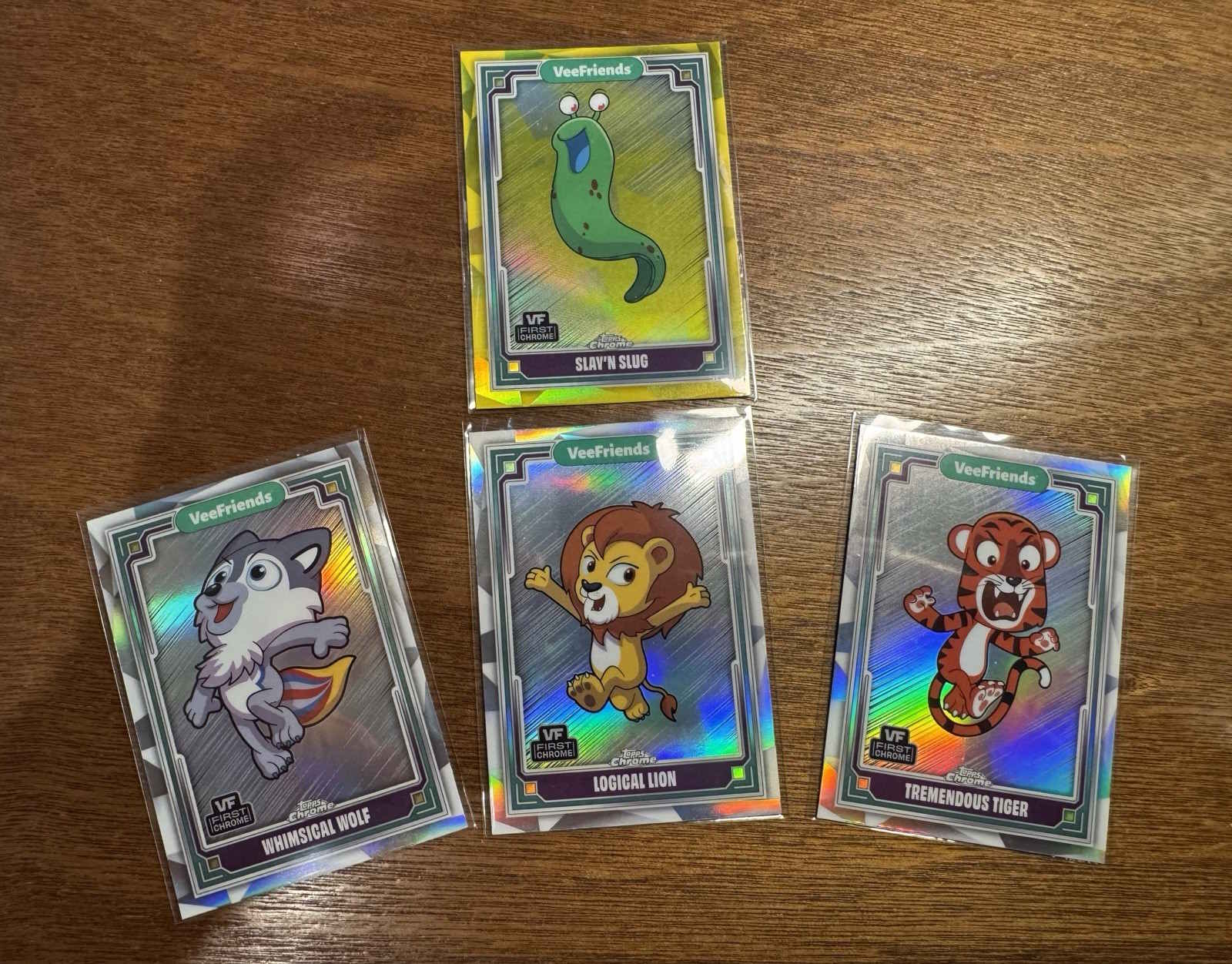

The most MVP awards ever won by an MLB player is seven. The most Cy Young awards ever won by an MLB player is also seven. Only one player in MLB history has ever hit 60 or more home runs in a season three times.
None of the players mentioned above (Barry Bonds, Roger Clemens, and Sammy Sosa, respectively) are enshrined in Baseball’s Hall of Fame, despite having each spent 10 years on the ballot.
What’s going on? The three players referenced above have been connected to the use of performance-enhancing drugs (PEDs) during their careers.
Today we’ll explore these players, their eventual chance at enshrinement in the Hall of Fame, take a look at their key rookie cards and the outlook for those cards.
A player becomes eligible for the Hall of Fame five years after their final appearance in a big league game, if he plays for 10 or more seasons and is selected by a committee to appear on the ballot. Members of the Baseball Writers Association of America (BBWAA) that have been members for 10 or more seasons are granted a vote in the election.
A player is elected if he appears on 75% or more of ballots. If he appears on less than 5% of ballots, he is dropped from future ballots. A player can remain on the ballot for up to 10 years.
If a player drops off the ballot, their chances of making the Hall of Fame aren’t over, as there are a number of committees that meet periodically to reconsider players who dropped off the ballot. Most of the players from the steroid era fall under the purview of the “Today’s Game” committee, which meets every two years (including in late 2022).

Baseball players have used performance-enhancing drugs since at least the 80’s, and likely long before. Baseball didn’t have a testing program until the 2005 season, meaning that for many years, players likely used PEDs to improve their performance, increase their stamina, and heal faster.
Many PED users were borderline performers who used PEDs to win or hold a job. When some of the top talents in the league used steroids, however, records fell, millions were made, and careers were extended.
From the mid-1990s to when testing was implemented, baseball saw an offensive outburst not often seen. Widespread use of PEDs is attributed to be at least one of the causes of this offense-heavy period. The era is now known as “the steroid era” and all players who appeared during that era have a cloud of suspicion handing over them.
For some players who just had some suspicion of possible PED use, this just meant a little longer of a wait to get elected. For example, it took Jeff Bagwell until his 7th ballot to get elected. Mike Piazza took until his 4th go-around. Ivan Rodriguez made it his first year, but just barely with 76% of the vote.
To date, voters for the Hall of Fame have deemed fairly well-confirmed steroid use a reason to keep players out of the Hall of Fame, citing the “character clause” noted by the Hall of Fame election guidelines.
Time brings perspective, for sure. As time passes, the “steroid era” is continuing to be put into context, just like every other era of baseball history. As time passes, general anger about the steroid era appears to be fading.
This is true of Hall of Fame voters as well, who are trending younger as more young writers become eligible to vote and older voters fall off the rolls. Generally speaking, younger voters are less interested in being “morality police” and prefer to let the numbers speak for themselves.
In addition, there are some blurry lines that have been drawn. Bud Selig, the commissioner who oversaw the steroids era and was far too slow to implement testing, is in the Hall of Fame. So is manager Tony LaRussa, who managed a number of PED users, including Jose Canseco and Mark McGwire.
Many have also speculated that there is already one or more PED users in the Hall of Fame. And of course, some consider David Ortiz’s selection with suspicion because of some leaked test results from a supposedly anonymous test.
These changing attitudes seem to suggest that the best of the steroid era will likely eventually be inducted into the Hall of Fame. It seems likely to happen over time, with the very best serving as something of a ceremonial “acceptance” of the era, followed by the selection of those who were somewhat less elite. There are some players who still have a long road ahead, for reasons we’ll look into more closely.
But who gets in first? Is there an order to this? I believe there are clear tiers of PED players that should dictate the order in which they are eventually inducted. Of course, this is just an educated guess…it’s quite possible the Hall of Fame surprises us with a special “PED Committee” that inducts all of these players in one fell swoop.
Let’s dig into the specific players, where they stand in the hierarchy, and what being inducted may do for their rookie card values.

That seven-time MVP mentioned at the opening of this article? He’s also the all-time home run leader, both for a career AND a single season. He is, of course, Barry Bonds.
That seven-time Cy Young award winner? He also won 7 ERA titles and 354 games in his career. That’s Roger Clemens.
The Hall of Fame credentials of these two players, PED use aside, is impeccable. They are not only in discussions of the best of their era, but of the best of all time.
Both players were included in the Mitchell Report, which was released in December of 2007, mere months after they both completed their playing careers. Legal problems related to PED use followed, and even though neither was found guilty of a crime, the court of public opinion was solidified.
The general consensus on both players is that they were likely Hall of Famers before they began PED use, but that PED’s allowed them to perform at a higher level longer than otherwise would be possible. Indeed, Bonds retired at age 42 and Clemens at 44.
Barry Bonds’ rookie cards appear in 1986 Traded and Update sets – Topps Traded, Fleer Update, and Donruss Rookies. The Topps Traded has been graded far more times than the other two combined, and this carries over to the number of PSA 10 examples of each card.
Despite this, the Topps card sells for as much and sometimes more than the others, with all available in the $300-450 range fairly regularly.
Looking for the rarest of the rare? Check out the 1986 Topps Traded Tiffany set. The print run of the Tiffany set in 1986 is reported to be only 5,000 sets. That means over half of all Bonds cards from the set have been graded by PSA. There were 444 PSA 10s at last count, and they will set you back $6,700 – $9,000.
| Card | Total PSA Pop | Recent Sale Pop | Recent Sale Price |
|---|---|---|---|
| 1986 Topps Traded Barry Bonds #11T | 54,372 | PSA 10 = 4,828 | PSA 10 = $300-450 |
| 1986 Topps Traded Tiffany Barry Bonds #11T | 2,593 | PSA 10 = 444 | PSA 10 = $6,700 – 9,000 |
| 1986 Donruss Rookies Barry Bonds #11 | 13,623 | PSA 10 = 1,587 | PSA 10 = $175-225 |
| 1986 Fleer Update Barry Bonds #U-14 | 22,269 | PSA 10 = 1,363 | PSA 10 = $300-375 |
Roger Clemens’ major release rookie cards appear in 1985 base sets, Topps, Donruss, and Fleer. Again, the Topps card has been graded more overall than the others by a wide margin. Interestingly enough, more of the Donruss card have been graded PSA 10, and the Donruss sells for less than half of the Topps and Fleer versions in that grade.
Clemens also appears in the 1984 Fleer Update set. In a PSA 10, that card sells for significantly above the price of the 1985 Topps or Fleer cards. Another option from 1984 is the TCMA minor league card featuring him as a member of the AAA Pawtucket Red Sox.
With a total pop of only 563, only 38 PSA 9’s, and no PSA 10’s, it’s a cool rarity that has a price tag in the range of the other 1984 and 1985 offers.
And of course, if you have deep pockets and a taste for the shiny and rare, there’s the 1985 Topps Tiffany. The assumed print run of this set is only 5,000 sets. A PSA 10 copy, of which there are only 48, will set you back well over $10,000.
| Card | Total PSA Pop | Recent Sale Pop | Recent Sale Price |
|---|---|---|---|
| 1985 Topps Roger Clemens #181 | 29,495 | PSA 10 = 359 | PSA 10 = $1,000-1,200 |
| 1985 Donruss Roger Clemens #273 | 9,913 | PSA 10 = 564 | PSA 10 = $300-400 |
| 1985 Fleer Roger Clemens #155 | 6,806 | PSA 10 = 172 | PSA 10 = $750-1,000 |
| 1985 Topps Tiffany Roger Clemens #181 | 1,584 | PSA 10 = 48 | PSA 10 = $10,000 - 15,000 |
| 1984 Fleer Update Roger Clemens #U-27 | 5,957 | PSA 10 = 580 | PSA 10 = $1,500-2,000 |
| 1984 TCMA Roger Clemens #22 | 563 | PSA 9 = 38 | PSA 9 = $1,500 |
Most Hall of Fame followers think that as the two elite players of the PED era, and with what is generally regarded as Hall of Fame-worthy careers before they started PED use, Bonds and Clemens will be the first two of the PED crowd to be inducted.
Both fell off the BBWAA ballot in 2022 after 10 years with vote totals north of 65%, so their Hall of Fame future rests in the hands of the Today’s Game committee.
Bonds and Clemens card values already reflect their status as all-time greats, be it ones with sullied reputations. I do expect that when elected to Cooperstown, however, their cards will see a temporary bump, in prices, followed by prices that hold strong for the future.
After Bonds and Clemens, who’s next? I see a second tier that consists of two players, one whose fame far outstrips the others, but who are both worthy Hall of Famers.
The first player is one of the first PED superstars, Mark McGwire. McGwire was always a big guy who hit home runs, including a then-record 49 in his rookie year. He had trouble staying healthy, though, and through his age 30 season, had 238 home runs to go with an impressive 143 OPS+.
The rest of his career featured 345 more home runs (giving him 583 for his career) and a 183 OPS+ (to leave his career OPS+ at 163. After hitting over 50 home runs in 1996 and 1997, he captivated the nation along with another player who will appear further down this list when he set a new single-season home run record with 70.
McGwire’s rookie card is in the 1985 Topps set, in the “1984 Team USA” subset. At the time McGwire was setting rookie home run records, there was an argument about whether this card really qualified as a rookie card, but that debate has long since fallen by the wayside. A huge number of these have been graded by PSA, but only a shockingly low ½ of 1% are PSA 10s.
If that isn’t rare enough for you, the Tiffany version is exceptionally rare, with a price tag to match.
| Card | Total PSA Pop | Recent Sale Pop | Recent Sale Price |
|---|---|---|---|
| 1985 Topps Mark McGwire #401 | 57,499 | PSA 10 = 305 | PSA 10 = $2,000-3,000 |
| 1985 Topps Tiffany Mark McGwire #401 | 1,699 | PSA 10 = 35 | PSA 10 = $25,000 |
The next player retired in 2005 at age 40, and two years later was mentioned in the Mitchell report. He appeared on the Hall of Fame ballot in 2011 and dropped off with only 2.1% of the vote.
With a 211-144 career record and a 3.28 career ERA (127 ERA+), six All Star selections, two ERA titles, and a career WAR of 67.8, though, Kevin Brown is getting a hard second look. He is an excellent example of how time and perspective change how a player is viewed.
That 67.8 WAR ranks 39th all-time among starting pitchers. Of those pitchers ahead of him on the list, only seven are not already in the Hall of Fame. Clemens is one. Curt Schilling is another. Three others are active and are sure things and will be eventually elected.
Brown has only one rookie card, in the 1987 Donruss set. Only about ½ of 1% of those graded by PSA are PSA 10’s, but unlike the players we’ve explored to date, Brown’s cards are shockingly affordable.
When Brown is eventually elected to the Hall of Fame, I expect it to catch some people off guard and for his cards to see a significant temporary jump as demand spikes. While this high will dissipate, expect significant price gains compared to the card’s current low standing.
| Card | Total PSA Pop | Recent Sale Pop | Recent Sale Price |
|---|---|---|---|
| 1987 Donruss Kevin Brown #627 | 5,123 | PSA 10 = 258 | PSA 10 = $30-35 |

The next tier of players will have to wait a bit longer, but should eventually get into Cooperstown. These players feature generally more doubt about their Hall of Fame worthiness without PED’s help as well as rookie cards that are squarely in the overproduced junk wax era.
The first player on the list partnered with Mark McGwire to revitalize baseball in 1998 and hit 60 or more home runs in an unprecedented three straight seasons. Sammy Sosa hit 609 home runs in his career.
Sosa’s primary rookie cards were released in 1990, one of the junkiest of the junk wax years. Therefore, he appears in a large number of sets that year, with 27 cards produced of him that year, most of which are very affordable.
His best base card is probably from the 1990 Leaf set. The population of this card is higher than Sosa’s other 1990 offerings, but it still sells for a stronger price in PSA 10 than the other base sets.
Of course, if you’re looking for rarer, both Bowman and Topps had Tiffany variations that year, although with much higher print runs than earlier Tiffany sets.
| Card | Total PSA Pop | Recent Sale Pop | Recent Sale Price |
|---|---|---|---|
| 1990 Leaf Sammy Sosa #220 | 26,910 | PSA 10 = 1,822 | PSA 10 = $50-60 |
| 1990 Topps Sammy Sosa #692 | 14,093 | PSA 10 = 1,044 | PSA 10 = $30-80 |
| 1990 Bowman Sammy Sosa #312 | 3,911 | PSA 10 = 178 | PSA 10 = $60 |
| 1990 Score Sammy Sosa #558 | 5,538 | PSA 10 = 365 | PSA 10 = $20-25 |
| 1990 Upper Deck Sammy Sosa #17 | 21,092 | PSA 10 = 2,375 | PSA 10 = $30-40 |
| 1990 Topps Tiffany Sammy Sosa #692 | 876 | PSA 10 = 170 | PSA 10 = $325-350 |
| 1990 Bowman Tiffany #312 | 1,296 | PSA 10 = 71 | NA |
Gary Sheffield hit .292/.393/.514 with a .907 OPS and 140 OPS+ over his 22 seasons, adding 509 home runs and over 1,600 RBI. While he offered limited defensive value, his bat was one of the most feared of his era. But an appearance on the Mitchell Report stalled out his Hall of Fame chances.
He has seen a slight uptick of late, with his 2022 vote total hitting 40.6%. Despite this, it feels unlikely that he’ll be inducted to the Hall of Fame before the players mentioned earlier in this article.
Sheffield’s rookie cards appear in 1989 sets. As with Sosa, he appears across a number of sets that season. In all, he appears in 174 sets or variations that year, giving a collector so many options.
| Card | Total PSA Pop | Recent Sale Pop | Recent Sale Price |
|---|---|---|---|
| 1989 Bowman Gary Sheffield #142 | 690 | PSA 10 = 156 | PSA 10 = $50 |
| 1989 Donruss Gary Sheffield #31 | 1,846 | PSA 10 = 414 | PSA 10 = $35 |
| 1989 Fleer Gary Sheffield #196 | 2,439 | PSA 10 = 770 | PSA 10 = $30 |
| 1989 Topps Gary Sheffield #343 | 1,862 | PSA 10 = 583 | PSA 10 = $40-45 |
| 1989 Upper Deck Gary Sheffield #13 | 8,903 | PSA 10 = 2,679 | PSA 10 = $40-50 |
| 1989 Bowman Tiffany Gary Sheffield #14242 | 478 | PSA 10 = 68 | PSA 10 = $300 |
| 1989 Topps Tiffany Gary Sheffield #343 | 564 | PSA 10 = 107 | PSA 10 = $225-250 |
Rafael Palmeiro had one of those careers that was sneaky good. He was only an All-Star twice, and added two Silver Slugger awards. Yet over his 20-year career hit .288/.371/.515, good for a .885 OPS and 132 OPS+. He finished his career with 3,020 hits, 569 home runs, and 1,835 RBI.
He is one of only six players ever with 3,020 home runs and 500+ home runs. His Hall of Fame case is based more on extended excellence than peak dominance, but it’s a solid case, nonetheless.
Palmeiro’s rookie cards appear in 1987. His Donruss, Donruss Rookies, and Topps all sell within a similar range, but check out the population discrepancy if you’re considering buying. He also appears in several Sportflics sets that year, if that’s your thing (Cardlines is a no judgement zone).
| Card | Total PSA Pop | Recent Sale Pop | Recent Sale Price |
|---|---|---|---|
| 1987 Donruss Rafael Palmeiro #43 | 10,840 | PSA 10 = 851 | PSA 10 = $25-35 |
| 1987 Donruss Rookies Rafael Palmeiro #47 | 1,409 | PSA 10 = 192 | PSA 10 = $25-30 |
| 1987 Topps Rafael Palmeiro #634 | 5,753 | PSA = 767 | PSA 10 = $35-40 |
Next up is a starting pitcher who played the bulk of his career in Yankee pinstripes. He finished with a 256-153 record and a 3.85 ERA (117 ERA+) and 60.2 career WAR. Andy Pettitte’s Hall of Fame credentials are a little bit borderline, but sans PEDs he’d have a strong case.
His final numbers are surprisingly similar to one-time teammate C.C. Sabathia’s. In the 2022 Hall of Fame voting, Pettitte received only 10.7% of the vote, meaning he’s got a long climb ahead.
Pettite’s rookie card appears in the 1993 Bowman set. It’s fairly low pop for the era (the Jeter rookie in that set has been graded 7,500 times by PSA). It’s also refreshing to see a player with only one rookie card in the junk wax era.
| Card | Total PSA Pop | Recent Sale Pop | Recent Sale Price |
|---|---|---|---|
| 1993 Bowman Andy Pettitte #103 | 1,043 | PSA = 234 | PSA 10 = $200 |

These players, most with junk wax era rookie cards, currently have fairly suppressed card values. Their election to the Hall of Fame should cause an increase in demand, which should raise prices fairly significantly, if only on a percentage basis. While much of this increase is likely to be temporary in nature, it would be fair to expect their cards to sell for slightly more than today’s prices even after that short-term increase dissipates.
Now, the eventual thaw in PED users is unlikely to carry over to all players. In particular, there is one type of player who I think will have a long wait still, and maybe never get the call. I’m speaking of players who were caught cheating and punished once the stricter testing policies before the 2005 season. Unfortunately, this could include recent PED user Fernando Tatis Jr.
What players did before testing is always a bit hazy. Who did what, when they did, what was their intention, etc. Once testing was instituted it was very clear what was not allowed and what the punishment was for breaking the rules. To get caught at that point was a different animal.
Sadly, several amazing players with Hall of Fame credentials fall into this category. Remember above when we mentioned that there are only six players with over 3,000 hits and 500 home runs? Alex Rodriguez is one of them. The 3-time MVP put up 117.5 WAR in his career, but in his first year on the Hall of Fame ballot in 2022, he earned only 34.3% of the vote.
Manny Ramirez falls into the same category of a player who would be a first-ballot Hall of Famer if not for not one, but two PED suspensions. The 12-time All-Star hit 555 home runs during his career, which saw him put up 69.5 WAR.
He was a popular player for his hitting acumen and his “Manny being Manny” persona. In this 6th year on the ballot in 2022, Manny got 28.9% of the vote. His vote total has been stagnated between 28 and 29 percent the last three years running.
Both Arod and Manny’s rookie cards (1994 for Arod, 1992 for Manny) are worth far less now than they were during their primes, before their PED suspensions.
Another player in this category is technically still active. Robinson Cano served his second suspension for PED use in 2021, and has appeared in games for a handful of teams in 2022. Cano, 39, has a .301/.351/.488 line for his career, good for a .839 OPS and 124 OPS+. His 68.1 WAR is 10th among all second basemen, and pretty much represents the average WAR of the 20 second baseman in the Hall of Fame.
Cano’s rookie cards appear in 2003. Like Arod and Manny, they are now worth less than they were before his PED troubles. For all three of these players, and any others in the “post testing suspension” category, their cards don’t look like a good investment unless you’re looking at very long-term “buy and hold” scenario.

To date, those suspected of PED use have been excluded from the Baseball Hall of Fame. Opinions are changing as time passes, and it’s likely some of the players mentioned in this article will be inducted in the coming years.
While the top tier of players may only see a slight jump in prices, demand for their cards should be strong. On the lower tiers, low prices and high populations keep card prices down somewhat. The potential exists, however, for good gains on a percentage basis as these players’ induction is likely to catch more collectors “off guard”.
These players represent some of the best performances on the field of their era, and are a part of baseball’s history, for better or worse. They likely have a spot in your collection, as well.
Is GameStop buying PSA? (the truth!)
I ripped an entire case of Phoenix Football (BIG win or MASSIVE loss?)
Make an extra 30% PROFIT on eBay with this sports card hack
What's your biggest trading card regret? This is a safe space. 🤣
I used ChatGPT to invest in sports cards (and make this thumbnail lol)
Easy hack for buying Tyrese Haliburton rookies at a DISCOUNT.
Did PSA Just Change Everything For Card Collectors?
Top Manchester United trading cards

BCW Thick Card Toploaders 197 Pt. 10 per pack
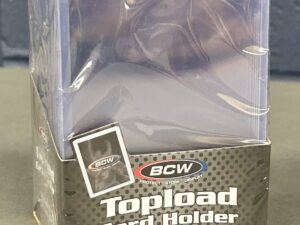
BCW Thick Card 59 Pt. Toploaders. 25 per pack

BCW 20 Pt. Toploaders. 25 per pack
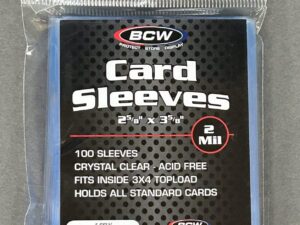
BCW Standard Card Sleeves. 100 per pack
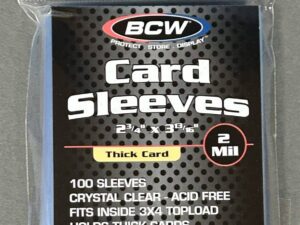
BCW Thick Card Sleeves. 100 per pack

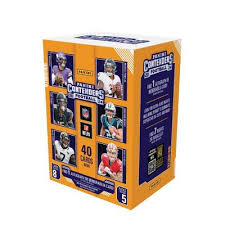
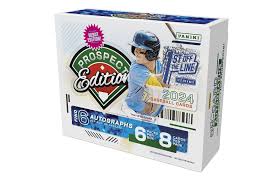
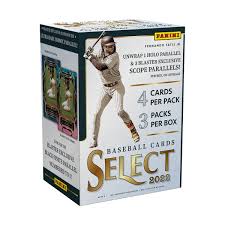
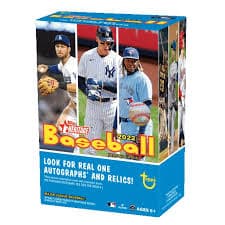
2022 Topps Heritage Baseball Blaster Box Configuration: 7 Packs per Box – 9 Cards per Box. Plus 1 extra pack.
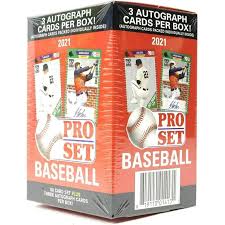
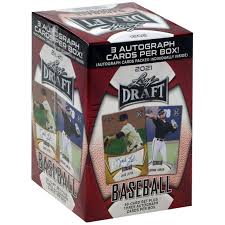
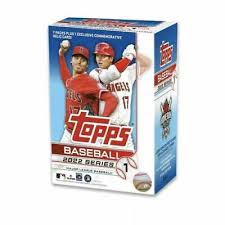
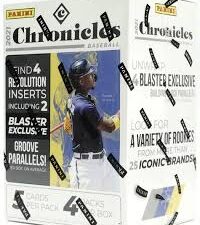
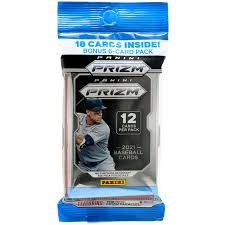
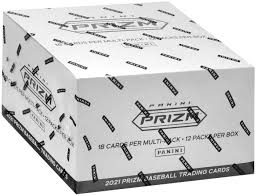

© Copyright 2025 - All rights reserved Cardlines.com / Media Techs LLC - Sports Card News, Reviews, Releases and BREAKS - #thehobby.
Important: When you click on links to various merchants on this site and make a purchase, this can result in this site earning a commission. Affiliate programs and affiliations include, but are not limited to, the eBay Partner Network.
I compared sports card prices from the big sellers to save YOU money
Cardlines 9 hours ago